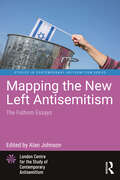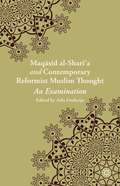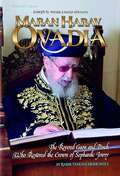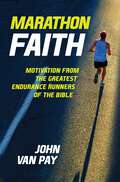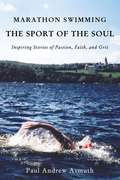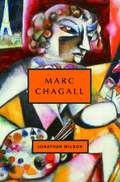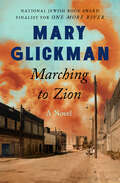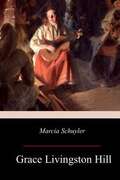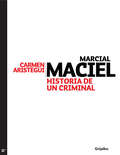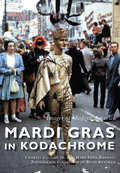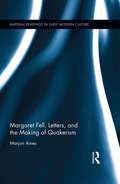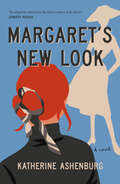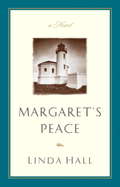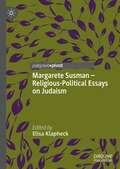- Table View
- List View
Mapping the Buddhist Path to Liberation: Diversity and Consistency Based on the Pāli Nikāyas and the Chinese Āgamas (The Humanities in Asia #9)
by Jianxun ShiDue to the diversity in Buddhism, its essence remains a puzzle. This book investigates the Buddhist path to liberation from a practical and critical perspective by searching for patterns found in the Pāli Nikāyas and the Chinese Āgamas. The early discourses depict the Buddhist path as a network of routes leading to the same goal: liberation from suffering. This book summarizes various teachings in three aspects, provides a template theory for systematically presenting the formulas of the sequential training of the path, and analyses the differences and similarities among diverse descriptions of the path in the early Buddhist texts. By offering a comprehensive map of the Buddhist path, this book will appeal to scholars and students of Buddhist studies as well as those practitioners with a serious interest in the Buddhist path.
Mapping the Differentiated Consensus of the Joint Declaration
by Jakob Karl RinderknechtThis book uses the insights of cognitive linguistics to argue for the possibility of differentiated consensus between separated churches. The Joint Declaration on the Doctrine of Justification, signed by the Lutheran World Federation and the Roman Catholic Church in 1999, represents the high water mark of the twentieth-century ecumenical movement. It declares that the sixteenth-century condemnations related to justification do not condemn the teachings of the partner church. Some critics reject the agreement, arguing that a consensus that is differentiated is not actually a consensus. In this book, Jakob Karl Rinderknecht shows that mapping the "cognitive blends" that structure meaning can reveal underlying agreement within apparent theological contradictions. He traces Lutheran and Catholic positions on sin in the baptized, especially the Lutheran simul iustus et peccator and the Catholic insistence that concupiscence in the baptized is not sin. He demonstrates that the JDDJ reconciles these positions, and therefore that a truly differentiated consensus is possible.
Mapping the New Left Antisemitism: The Fathom Essays (Studies in Contemporary Antisemitism)
by Alan JohnsonMapping the New Left Antisemitism: The Fathom Essays provides a comprehensive guide to contemporary Left antisemitism. The rise of a new and largely left-wing form of antisemitism in the era of the Jewish state and the distinction between it and legitimate criticism of Israel are now roiling progressive politics in the West and causing alarming spikes in antisemitic incitement and incidents. Fathom journal has examined these questions relentlessly in the first decade of its existence, earning a reputation for careful textual analysis and cogent advocacy. In this book, the Fathom essays are contextualised by three new contributions: Lesley Klaff provides a map of contemporary antisemitic forms of antizionism, Dave Rich writes on the oft-neglected lived experience of the Jewish victims of contemporary antisemitism and David Hirsh assesses the intellectual history of the left from which both Fathom and his own London Centre for the Study of Contemporary Antisemitism, as well as this book series, have emerged. Topics covered by the contributors include antisemitic antizionism and its underappreciated Soviet roots; the impact of analogies with the Nazis; the rise of antisemitism on the European continent, exploring the hybrid forms emerging from a cross-fertilisation between new left, Christian and Islamist antisemitism; the impact of antizionist activism on higher education; and the bitter debates over the adoption of the oft-misrepresented International Holocaust Remembrance Alliance (IHRA) definition of antisemitism. This work will be of considerable appeal to scholars and activists with an interest in antisemitism, Jewish studies and the politics of Israel.
Mapping the Origins Debate: Six Models of the Beginning of Everything
by Gerald RauMidwest Publishing Awards ShowMapping the Origins Debate
Mapping the Ottomans
by Palmira Brummett"Simple paradigms of Muslim-Christian confrontation and the rise of Europe in the seventeenth century do not suffice to explain the ways in which European mapping envisioned the "Turks" in image and narrative. Rather, maps, travel accounts, compendia of knowledge, and other texts created a picture of the Ottoman Empire through a complex layering of history, ethnography, and eyewitness testimony, which juxtaposed current events to classical and biblical history; counted space in terms of peoples, routes, and fortresses; and used the land and seascapes of the map to assert ownership, declare victory, and embody imperial power's reach. Enriched throughout by examples of Ottoman self-mapping, this book examines how Ottomans and their empire were mapped in the narrative and visual imagination of early modern Europe's Christian kingdoms. The maps serve as centerpieces for discussions of early modern space, time, borders, stages of travel, information flows, invocations of authority, and cross-cultural relations"--"This book examines how the Ottomans and their empire were mapped in the narrative and visual imagination of the Christian kingdoms of early modern Europe. Simple paradigms of Muslim-Christian confrontation and the 'rise' of Europe in the seventeenth century do not suffice to explain the ways in which European mapping envisioned the "Turks" in image and narrative. Rather, maps, travel accounts, compendia of knowledge, and other texts created a picture of the Ottoman empire through a complex layering of history, ethnography, and eyewitness testimony which juxtaposed current events to classical and Biblical history; counted space in terms of peoples, routes, and fortresses; and used the land and seascapes of the map to assert ownership, declare victory, and embody the reach of imperial power. Maps here serve as centerpieces for a discussion of early modern space, time, borders, stages of travel, information flows, invocations of authority, and cross-cultural relations. The book is enriched throughout by examples of Ottoman self-mapping"--
Maps for a Fiesta: A Latina/o Perspective on Knowledge and the Global Crisis
by Otto MaduroWhat can theology offer in the context of neoliberalism, globalization, growing inequality, and an ever more ecologically precarious planet that disproportionately affects the poor? This book, by one of the country’s best-known Latino theologians, explores possibilities for liberation from the forces that would impose certain forms of knowledge on our social world to manipulate our experience of identity, power, and justice.Beautifully written in a refreshingly direct and accessible prose, Maduro’s book is nevertheless built upon subtly articulated critiques and insights. But to write a conventional academic tractatus would have run counter to Maduro’s project, which is built on his argument that ignorance is masked in the language of expertise, while true knowledge is dismissed because it is sometimes articulated in pedestrian language by those who produce it through the praxis of solidarity and struggle for social justice.With a generosity and receptivity to his readers reminiscent of letters between old friends, and with the pointed but questioning wisdom of a teller of parables, Maduro has woven together a twenty-first-century reply to Marx’s “Theses on Feuerbach.” Neither conventional monograph nor memoir, neither a theological nor a political tract, but with elements of all of these, Maps for a Fiesta arrives as Maduro’s philosophical and theological testament—one that celebrates the knowledge-work and justice-making of the poor.What Maduro offers here is a profound meditation on the relationship between knowledge and justice that could be read as a manifesto against the putatively unknowable world that capitalist chaos has made, in favor of a world that is known by the measure of its collective justice. His fiesta grants us the joy that nourishes us in our struggles, just as knowledge gives us the tools to build a more just society. What Maduro offers is nothing less than an epistemology of liberation.
Maps of Consciousness: The Classic Text on Exploring the Mind and Expanding Awareness
by Ralph MetznerA classic guide to expanding perception and consciousness development• Explores six ancient yet timeless systems for exploring the mind: the I Ching, Tantra, Tarot, astrology, alchemy, and the yoga philosophy of Actualism • Shares exercises from each system and illuminates the key stages in the journey of consciousness development • Shows how each of these disciplines can help you become a fully aware and conscious participant in your own spiritual evolution In this highly acclaimed classic, psychedelic elder Ralph Metzner presents a guide to six ancient systems, once known only to the initiated few, to expand awareness and free your consciousness from exterior limitations and cultural conditioning. Metzner begins with the I Ching, revered by the Chinese as the oldest and wisest book in the world. He explains how it reveals change as the evolutionary constant and offers a hands-on method of divination and guidance. He explores the Hindu and Buddhist Tantras of medieval India, ancient practices celebrating the union of male and female energies that transmute ordinary sense experience into ecstatic ritual worship. He examines the Tarot, revealing how the cards act as culture-transcending mirrors, bringing us through worlds of darkness and light in a complex journey. He looks at the practice of alchemy, explaining how it is a &“psychic chemistry&” of inner union through which we can transform planetary and cosmic energies. He explores the esoteric aspects of astrology, revealing the rhythmic cycles of the planets and how their phases may be experienced in terms of motion and emotion. He then examines in depth the yoga philosophy of Actualism, centered on the techniques of Agni Yoga, which allow you to use your living &“inner fire&” to illuminate the shadow parts of consciousness and burn out that which obstructs the free flow of energy. With a new foreword by UC Berkeley professor of neurobiology David E. Presti and featuring all of the original diagrams, this edition of Metzner&’s classic text shows how each of these disciplines can help the modern individual become a fully aware and conscious participant in their own spiritual evolution.
Maqāṣid al-Sharī‘a and Contemporary Reformist Muslim Thought: An Examination
by Adis DuderijaIt is the first study which comprehensively, systematically and critically examines the role and usefulness of the concept of Maqasid al-Shari'a (higher Objectives of Islamic Law) in contemporary Muslim reformist thought in relation to number of specific issues pertaining to Islamic legal philosophy, law, ethics and the socio-political sphere.
Mara's Stories: Glimmers in the Darkness
by Gary SchmidtA testament to the power of stories, and how they may bring hope even in times of darkness. As night falls, the women gather their children to listen to Mara tell her stories. They are stories of light and hope and freedom, stories of despair and stories of miracles, stories of expected pain and stories of unexpected joy--all told in the darkness of the concentration camp barracks. Through extensive research noted in the back of the book, Gary Schmidt has skillfully woven together stories from such sources as the Jewish religious scholar, Martin Buber; Holocaust survivor, Elie Wiesel; and folklorists, Steve Zeitlin and Yaffa Eliach. Combining lore of the past with tales born in the concentration camps, Mara's stories speak to us from a time that must never be forgotten.
Maran Harav Ovadia: The Revered Gaon And Posek Who Restored The Crown Of Sephardic Jewry
by Yehuda HeimowitzHe had a mind big enough to master all of Torah. A spirit big enough to lead his people. And a heart big enough to contain all of Klal Yisrael. Maran Harav Ovadia Yosef met with Prime Ministers, Presidents, great rabbis - and the humblest Jew seeking advice or a berachah. He inspired and led a revolution in Sephardic society. But whether he was the ten-year old son of a poor grocer pleading to study Torah constantly, or an ailing man in his '90s keeping a schedule that would have tired someone half his age, Harav Ovadia Yosef had only one agenda: Torah. Always Torah. And everyday life according to the Torah. The brilliant gaon was an unyielding warrior for Torah. As a young rabbi in Cairo, he courageously stood firm for halachah even as a gun was pointed at his head. In the early days of the State of Israel, he struggled to bring his Sephardic brethren back to the magnificent Torah traditions that many were abandoning with terrifying haste. His encyclopedic knowledge was breathtaking and unparalleled. In his scores of brilliant sefarim he "restored the crown to its glory," fighting the battles of Torah and maintaining the preeminence of Maran Beit Yosef. As unyielding as he was in defense of Torah, so was he compassionate in personal encounters. He loved all Jews, and they loved him. When there were hundreds of agunot after Israel's wars, it was to him that all turned to find the keys to their chains. So multifaceted a leader needs a multifaceted biography. In Maran Harav Ovadia we meet the sage, the leader, the visionary, the loving father of all in distress. Rabbi Yehudah Heimowitz, author of the bestselling biographies Rav Elyashiv and Rav Nosson Tzvi, brings us Maran Harav Ovadia Yosef's rich and historic life and includes hundreds of stories and vignettes based on recollections of his family, friends, and colleagues. Generous excerpts from Harav Ovadia's personal writings give us a first-hand glimpse of his encounters and achievements, while hundreds of photos and historical documents offer a visual history of his extraordinary life. This book is the story of a great shaper of our era, a man who brought the Torah to hundreds of thousands.
Marathon Faith: Motivation from the Greatest Endurance Runners of the Bible
by John Van PayGOD WANTS TO FINISH WHAT HE STARTED IN YOU Surrendering your life to Jesus is the greatest decision you will ever make, but that's just the starting line. Many of us begin a journey of following Jesus without a realistic expectation of the price required to finish our spiritual race. As a result, we lose heart when the road becomes difficult. In Marathon Faith: Motivation from the Greatest Endurance Runners of the Bible, pastor and marathon runner John Van Pay offers help. Van Pay shows how the "endurance runners of the Bible" overcame obstacles on their faith journeys and how you too can finish your spiritual race through their example. By adding personal adventures, humorous mishaps, and grueling struggles from his own endurance races and life experiences, Van Pay shares in vulnerable ways how God helps when things get tough. You too can finish strong.
Marathon Swimming The Sport of the Soul/La nage en eau libre (French Language Edition): Inspiring Stories of Passion, Faith, and Grit
by Paul Andrew AsmuthFRENCH EDITION.
Marathon Swimming The Sport of the Soul: Inspiring Stories of Passion, Faith, and Grit
by Paul Andrew AsmuthWhen the plans and dreams of a young swimmer are shattered by the United States’ boycott of the 1980 Olympic Games in Moscow, God opens the door of new opportunities. For Paul Asmuth, then 22, it is the end of an unfulfilled dream, and the beginning of another journey, this one remarkable and life-changing. Plunging into the astounding, grueling, hypnotic, and often oddly beautiful world of international marathon swimming competitions, Asmuth experiences both triumph and tragedy, and, in a process as long and punishing as the marathon swims themselves, slowly discovers the best of himself. If you care for resumes, Asmuth is one of the most successful marathon swimmers in history. In the sapphire seas off Italy, in the frigid lakes of Quebec, Canada, in the marshy back bays of New Jersey, in the questionable waters ringing Manhattan, swimming distances from twenty to forty miles, Asmuth emerged victorious, often to thunderous acclaim. After multiple victories at the twenty-six-mile swim across Quebec’s Lac Memphremagog, up to 20,000 spectators would cheer and call him “le roi” (the king) of their lake. But true victory is not a matter of accolades or medals, and the stories that make a real difference unfold behind the headlines. Overcoming self-doubt, nausea, hypothermia, cruel tides and dark, watery shadows both real and imagined, Asmuth calls upon passion, iron-clad resolve, and steadfast faith to emerge a changed man, attaining success in its truest and most honest form. This success does not end when Asmuth retires from competing. Coming full circle, when he hangs up his swim suit, Paul takes the knowledge, lessons and examples he learned from his own experiences and some of the world’s greatest coaches, and turns to helping others with their swimming dreams. His prayers to give back are answered by coaching opportunities at multiple World Championships and two Olympic Games, where marathon swimming is now a contested event. But this is not just the tale of a swimmer. Like any great story, Paul’s transcends sport. By listening to the voice of faith and not of fear, new dreams are born, and God’s plans are revealed.
Marc Chagall (Jewish Encounters Series)
by Jonathan WilsonNovelist and critic Jonathan Wilson clears away the sentimental mists surrounding an artist whose career spanned two world wars, the Russian Revolution, the Holocaust, and the birth of the State of Israel. Marc Chagall's work addresses these transforming events, but his ambivalence about his role as a Jewish artist adds an intriguing wrinkle to common assumptions about his life. Drawn to sacred subject matter, Chagall remains defiantly secular in outlook; determined to "narrate" the miraculous and tragic events of the Jewish past, he frequently chooses Jesus as a symbol of martyrdom and sacrifice. Wilson brilliantly demonstrates how Marc Chagall's life constitutes a grand canvas on which much of twentieth-century Jewish history is vividly portrayed. Chagall left Belorussia for Paris in 1910, at the dawn of modernism, looking back dreamily on the world he abandoned. After his marriage to Bella Rosenfeld in 1915, he moved to Petrograd, but eventually returned to Paris after a stint as a Soviet commissar for art. Fleeing Paris steps ahead of the Nazis, Chagall arrived in New York in 1941. Drawn to Israel, but not enough to live there, Chagall grappled endlessly with both a nostalgic attachment to a vanished past and the magnetic pull of an uninhibited secular present. Wilson's portrait of Chagall is altogether more historical, more political, and edgier than conventional wisdom would have us believe-showing us how Chagall is the emblematic Jewish artist of the twentieth century. Visit nextbook. org/chagall for a virtual museum of Chagall images. From the Hardcover edition.
Marching to Zion: A Novel
by Mary GlickmanA family of Eastern European refugees finds a home in racially charged St. Louis in this sweeping historical novel from a National Jewish Book Award finalist. In 1916, Mags Preacher arrives in the big city of St. Louis, fresh from the piney woods, hoping to learn the beauty trade. Instead, she winds up with a job at Fishbein&’s Funeral Home, run by an émigré who came to America to flee the pogroms of Russia. Mags knows nothing about Jews except that they killed the Lord Jesus Christ, but by the time her boss saves her life during the race riots in East St. Louis, all her perceptions have changed.Marching to Zion is the story of Mags and of Mr. Fishbein, but it&’s also the story of Fishbein&’s daughter, Minerva, a beautiful redhead with an air of danger about her, and Magnus Bailey, Fishbein&’s charismatic business partner and Mags&’s first friend in town. When Magnus falls for Minerva&’s willful spirit, he&’ll learn just how dangerous she can be for a black man in America. Readers of Mary Glickman&’s One More River will celebrate the return of Aurora Mae Stanton, who joins a cast of vibrant new characters in a tale that stretches from East St. Louis, Missouri, to Memphis, Tennessee, from World War I to the Great Depression. Hailed as &“a powerful reminder of the discrimination and unspeakable hardships African Americans suffered,&” Marching to Zion is a gripping love story, a fascinating angle on history, and a compelling meditation on justice and fate (Jewish Book Council).
Marcia Schuyler (Grace Livingston Hill #83)
by Grace Livingston HillThe sun was already up and the grass blades were twinkling with sparkles of dew, as Marcia stepped from the kitchen door. She wore a chocolate calico with little sprigs of red and white scattered over it, her hair was in smooth brown braids down her back, and there was a flush on her round cheeks that might have been but the reflection of the rosy light in the East. Her face was as untroubled as the summer morning, in its freshness, and her eyes as dreamy as the soft clouds that hovered upon the horizon uncertain where they were to be sent for the day.
Marcial Maciel: Historia de un criminal
by Carmen AristeguiMaciel es un símbolo de la corrupción de la Iglesia y de un cura y empresario. Los graves delitos serán siempre recordados. El caso de Maciel simboliza tantas cosas en este país que es indispensable revisarlo con detenimiento. La corrupción, la bajeza, el abuso de poder, la inmoralidad, la falta de ética y demás valores han sido rotos en esta historia, pero quizá lo más grave ahora es la impunidad a los culpables. Aunque el Vaticano haya declarado "culpable" a Maciel, con muchos años de retraso, su historia ya representa una grave falta a los valores más esenciales de la Iglesia católica y su filosofía originaria. Carmen Aristegui, también hace ya mucho tiempo, ha seguido el caso Maciel con tenacidad casi obsesiva. Ella puso el tema en los medios y ahora, después de las entrevistas a los hijos ocultos de Maciel, el Vaticano ha reaccionado y parece venir una segunda etapa en el caso. Aunque pareciera que aquí concluye la historia, esto no es así: ahora viene, muy posiblemente, la lucha por el poder y el dinero de los Legionarios de Cristo. La organización que gana millones de dólares será disputada por el propio clero y más corruptelas saldrán a la luz o serán silenciadas.
Marcion and the Making of a Heretic
by Judith M. LieuA comprehensive and authoritative account of the 'heretic' Marcion, this volume traces the development of the concept and language of heresy in the setting of an exploration of second-century Christian intellectual debate. Judith M. Lieu analyses accounts of Marcion by the major early Christian polemicists who shaped the idea of heresy, including Justin Martyr, Irenaeus, Tertullian, Epiphanius of Salamis, Clement of Alexandria, Origen, and Ephraem Syrus. She examines Marcion's 'Gospel', 'Apostolikon', and 'Antitheses' in detail and compares his principles with those of contemporary Christian and non-Christian thinkers, covering a wide range of controversial issues: the nature of God, the relation of the divine to creation, the person of Jesus, the interpretation of Scripture, the nature of salvation, and the appropriate lifestyle of adherents. In this innovative study, Marcion emerges as a distinctive, creative figure who addressed widespread concerns within second-century Christian diversity.
Mardi Gras in Kodachrome (Images of Modern America)
by Charles Cassady Jr. Mary Lynn Randall Ruth KetchamAmerica's greatest party and America's most colorful city, in all their shades, shimmer here in a never-before-published 1950-1960 collection of photographs taken at New Orleans's annual Mardi Gras. Photographer Ruth Ketcham chose the revolutionary Kodachrome slide film to capture Carnival, its walking and parading krewes, bystanders, and masquers. Kodachrome's fade-resistant images preserve a bygone 1950s era, not only of Mardi Gras but also of a bustling French Quarter, alive again with Regal Beer ("Red beans and rice / And Regal on ice"), Dixieland jazz clubs, the burlesque dancers and temptations of Bourbon Street, and the shopper's paradise that was Canal Street.
Margaret Fell, Letters, and the Making of Quakerism (Material Readings in Early Modern Culture)
by Marjon AmesIntensely persecuted during the English Interregnum, early Quakers left a detailed record of the suffering they endured for their faith. Margaret Fell, Letters, and the Making of Quakerism is the first book to connect the suffering experience with the communication network that drew the faithful together to create a new religious community. This study explores the ways in which early Quaker leaders, particularly Margaret Fell, helped shape a stable organization that allowed for the transition from movement to church to occur. Fell’s role was essential to this process because she developed and maintained the epistolary exchange that was the basis of the early religious community. Her efforts allowed for others to travel and spread the faith while she served as nucleus of the community’s communication network by determining how and where to share news. Memory of the early years of Quakerism were based on the letters Fell preserved. Marjon Ames analyzes not only how Fell’s efforts shaped the inchoate faith, but also how subsequent generations memorialized their founding members.
Margaret's New Look
by Katherine AshenburgFashion, mystery, and politics combine in this delectable, pacey novel set in a big-city museum where an ambitious curator is launching a controversial exhibition of Christian Dior's "New Look."At work, Margaret is the well-regarded curator of fashion for a big-city museum. At home, she is the mother of lively twin girls, the spouse of a successful mystery-book author, and a daughter still grieving the recent death of her beloved father. Now, as she prepares to launch a career-defining exhibition on the haute couture of legendary French designer Christian Dior, she faces fierce internal politics from her peers alongside unsettling questions from younger colleagues. And to make matters more worrying, as the exhibition's opening night approaches, items in the Dior collection mysteriously begin to disappear.Meanwhile, Margaret must deal with revelations that have surfaced after her father's death—secrets that force her to confront her family's long-suppressed Jewish heritage. Struggles and mysteries at work and home soon entwine in the unlikely figure of an elderly collector of couture—one who may have had a fascinating, long-ago connection to Dior himself.With her keen observation of human foibles, deep love of textiles and craft, deft construction of a mystery, and ear for spicy dialogue, Katherine Ashenburg creates a page-turning tale.
Margaret's Peace
by Linda HallAfter the death of her only daughter and the subsequent breakup of her marriage, Margaret Collingwood returns to her home in Coffins Reach, Maine, and to the seafront house she has inherited. She goes there to rest, to paint, and to find the God she has lost. Instead, she is thrust back twenty-five years and must relive the accidental death of her sister and face her family's long-buried secrets.The old family home shrouded in the secrets of the past... When Margaret Collinwood inherits her childhood home in Coffins Reach, Maine, she returns to the seafront house hoping to rest, to paint, and to find the peace she has lost after the death of her daughter and the subsequent breakup of her marriage. But Margaret's return to her family home forces her to face difficult childhood memories surrounding the fatal accicdent that took the life of her sister twenty-five years earlier. As Margaret begins to examine the past, strange things start happening in the present. As she moves between her childhood memories,the ghostly legends surrounding her historic house, and the trendy cafes of the Maine coast, Margaret uncovers the truth hidden in long-buried family secrets. And in facing the past, she finds new hope for her future.From the Trade Paperback edition.
Margarete Susman - Religious-Political Essays on Judaism (Jewish Thought and Philosophy)
by Elisa KlapheckMargarete Susman was among the great Jewish women philosophers of the twentieth century, and largely unknown to many today. This book presents, for the first time in English, six of her important essays along with an introduction about her life and work. Carefully selected and edited by Elisa Klapheck, these essays give the English-speaking reader a taste of Susman’s religious-political mode of thought, her originality, and her importance as Jewish thinker. Susman's writing on exile, return, and the revolutionary impact of Judaism on humanity, illuminate enhance our understanding of other Jewish philosophers of her time: Martin Buber, Franz Rosenzweig, and Ernst Bloch (all of them her friends). Her work is in particularly fitting company when read alongside Jewish religious-political and political thinkers such as Bertha Pappenheim, Hannah Arendt, Simone Weil, and Gertrud Stein. Initially a poet, Susman became a follower of the Jewish Renaissance movement, secular Messianism, and the German Revolution of 1918. This collection of essays shows how Susman's work speaks not only to her own time between the two World Wars but to the present day.
Margery Kempe and the Lonely Reader
by Rebecca KrugSince its rediscovery in 1934, the fifteenth-century Book of Margery Kempe has become a canonical text for students of medieval Christian mysticism and spirituality. Its author was a fifteenth-century English laywoman who, after the birth of her first child, experienced vivid religious visions and vowed to lead a deeply religious life while remaining part of the secular world. After twenty years, Kempe began to compose with the help of scribes a book of consolation, a type of devotional writing found in late medieval religious culture that taught readers how to find spiritual comfort and how to feel about one's spiritual life. In Margery Kempe and the Lonely Reader, Rebecca Krug shows how and why Kempe wrote her Book, arguing that in her engagement with written culture she discovered a desire to experience spiritual comfort and to interact with fellow believers who also sought to live lives of intense emotional engagement.An unlikely candidate for authorship in the late medieval period given her gender and lack of formal education, Kempe wrote her Book as a revisionary act. Krug shows how the Book reinterprets concepts from late medieval devotional writing (comfort, despair, shame, fear, and loneliness) in its search to create a spiritual community that reaches out to and includes Kempe, her friends, family, advisers, and potential readers. Krug offers a fresh analysis of the Book as a written work and draws attention to the importance of reading, revision, and collaboration for understanding both Kempe’s particular decision to write and the social conditions of late medieval women’s authorship.


